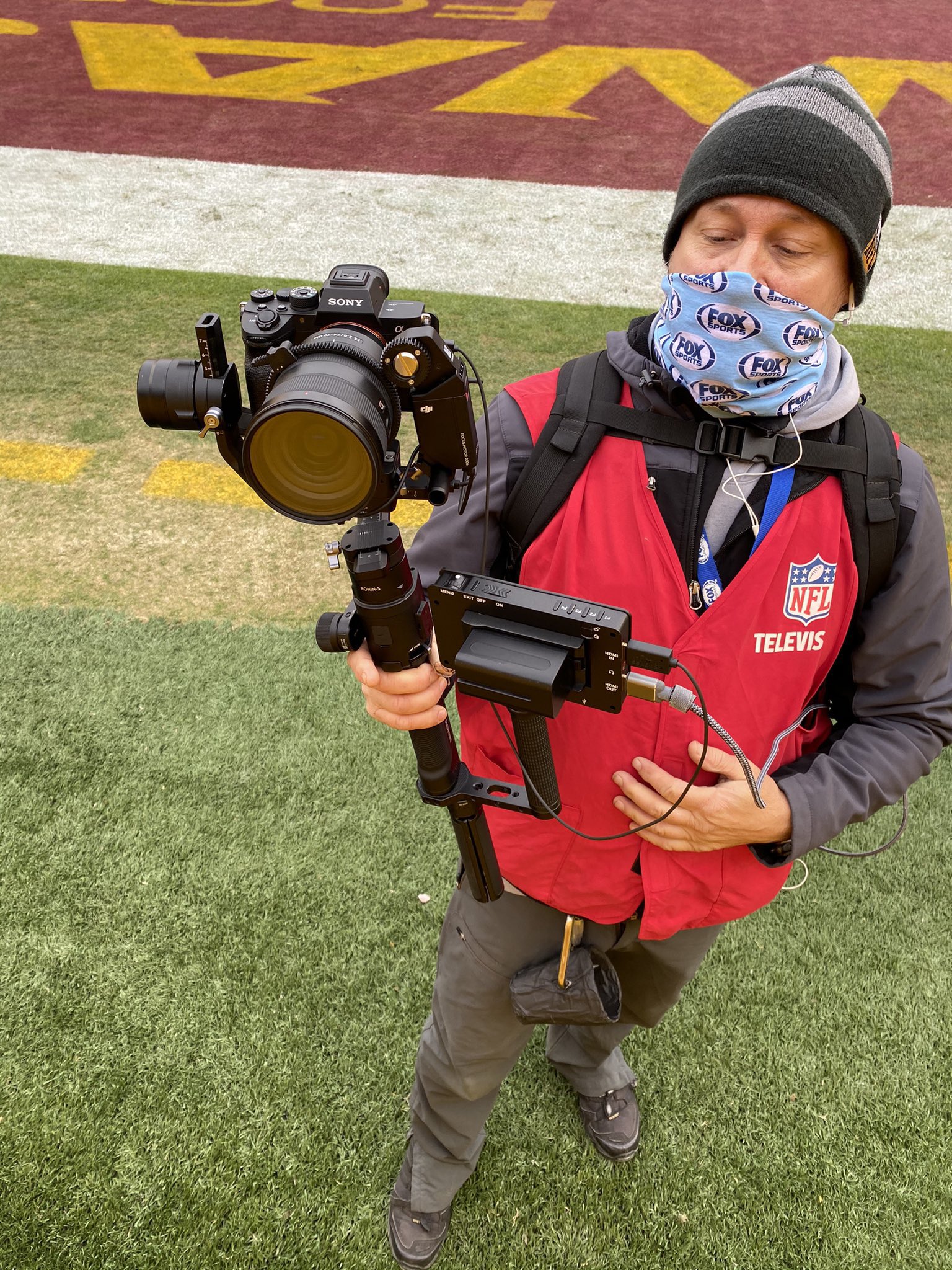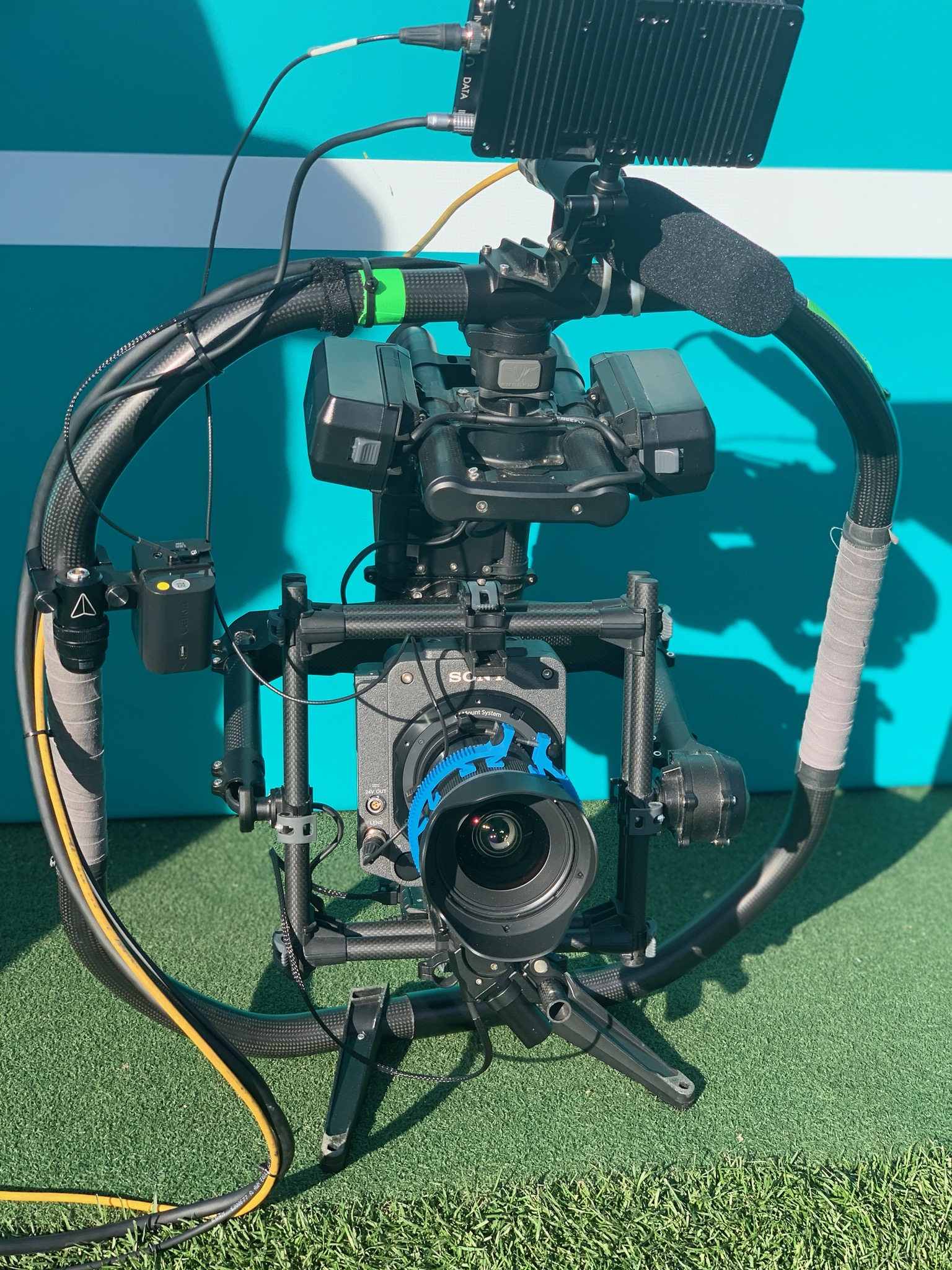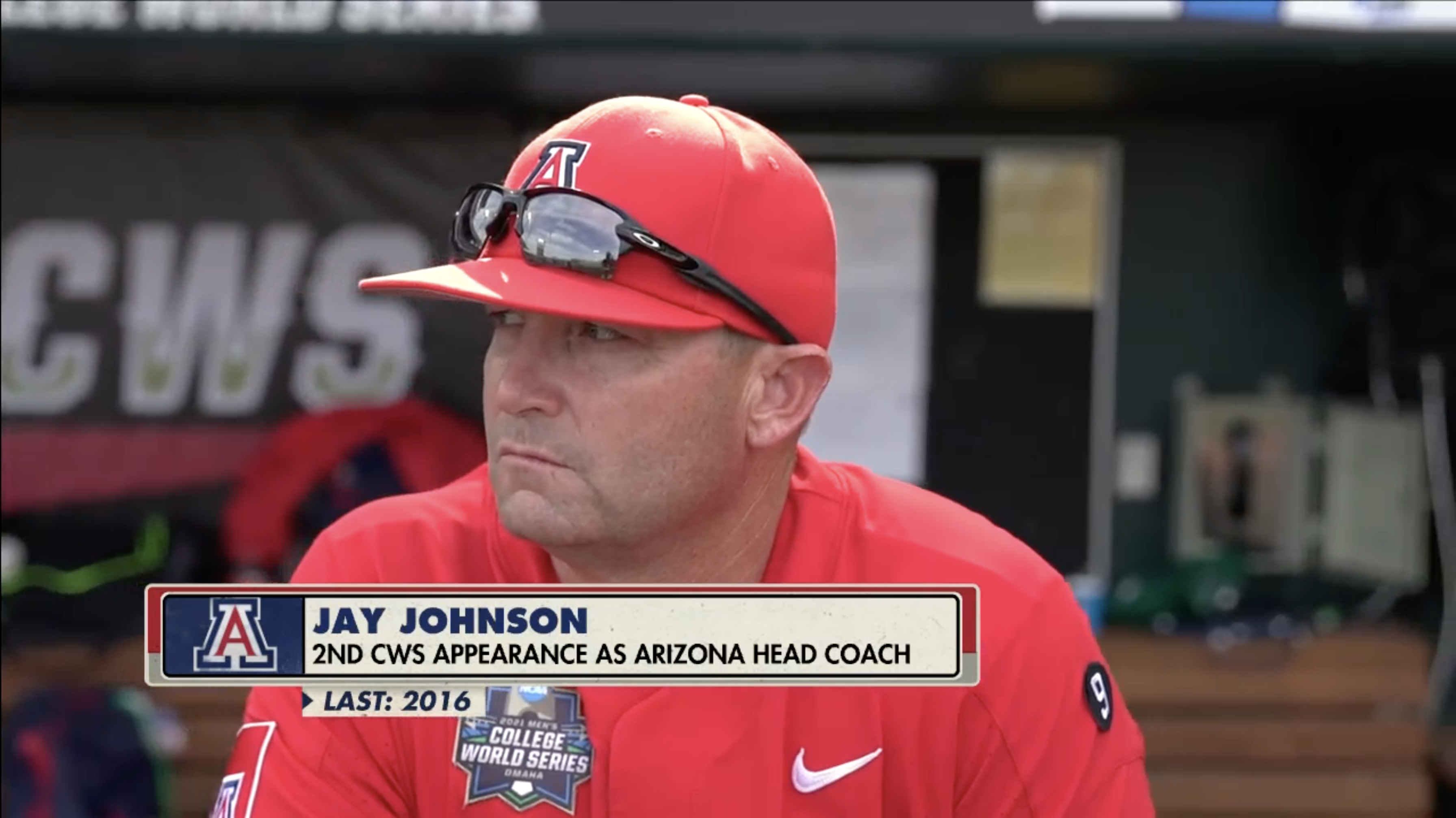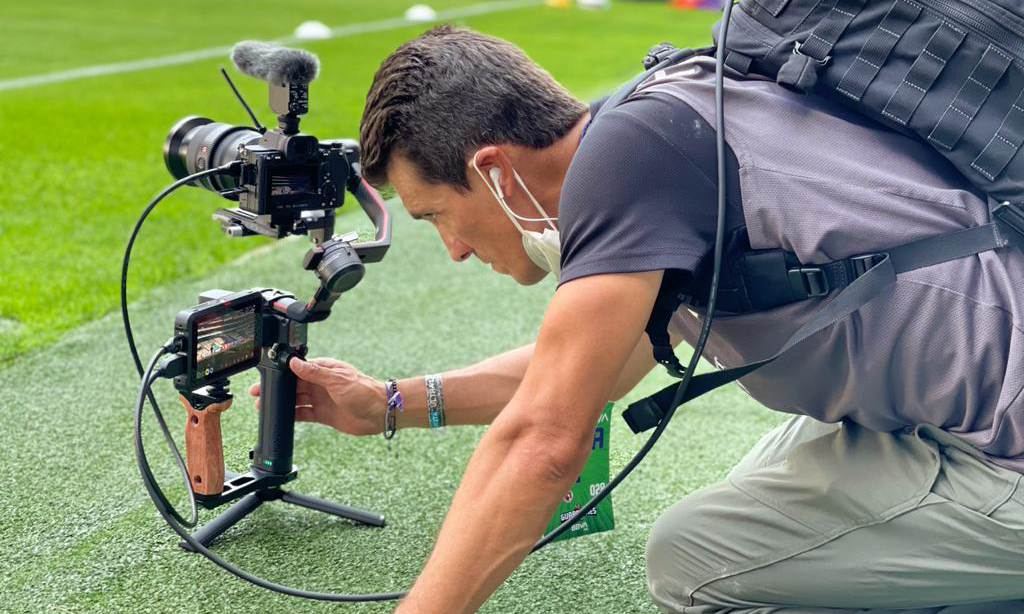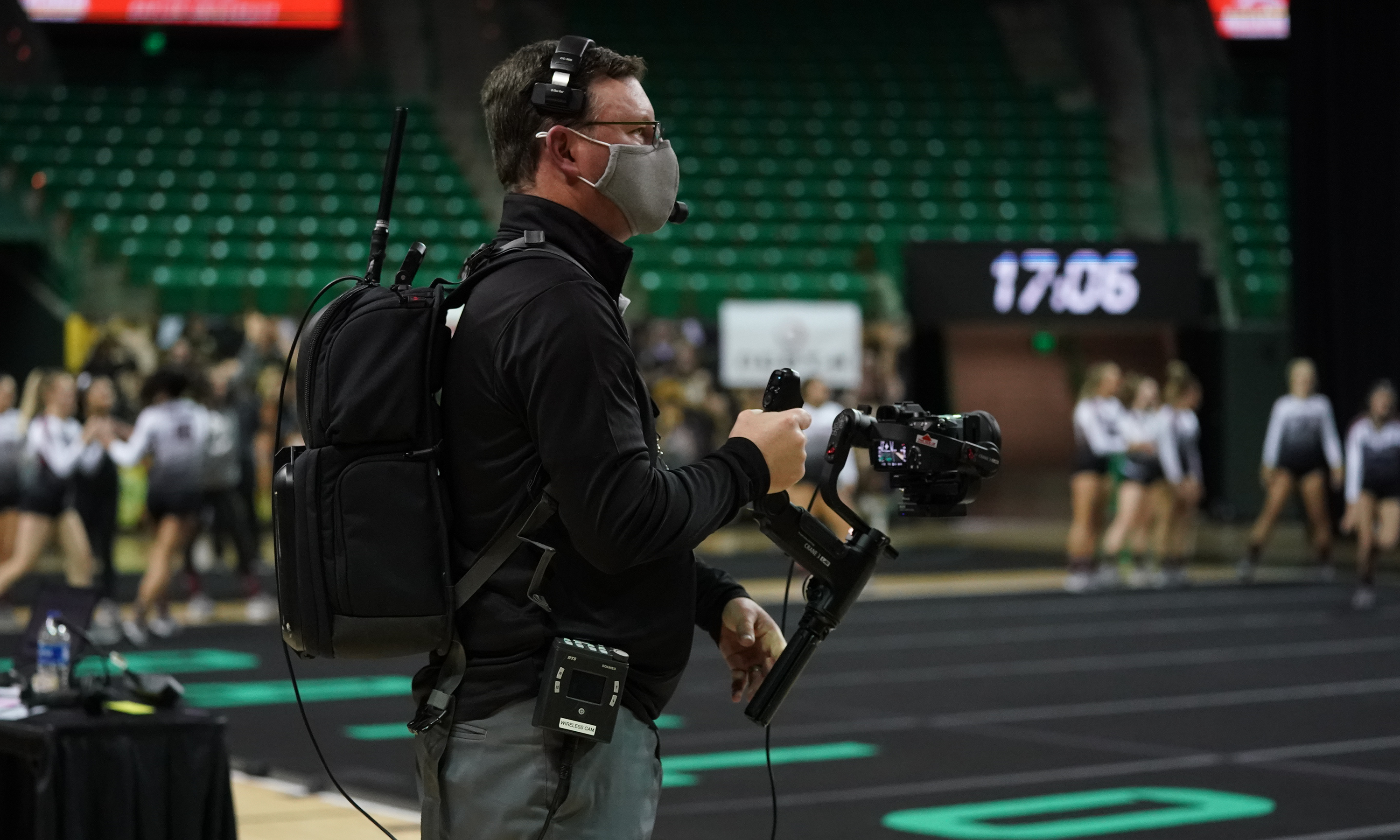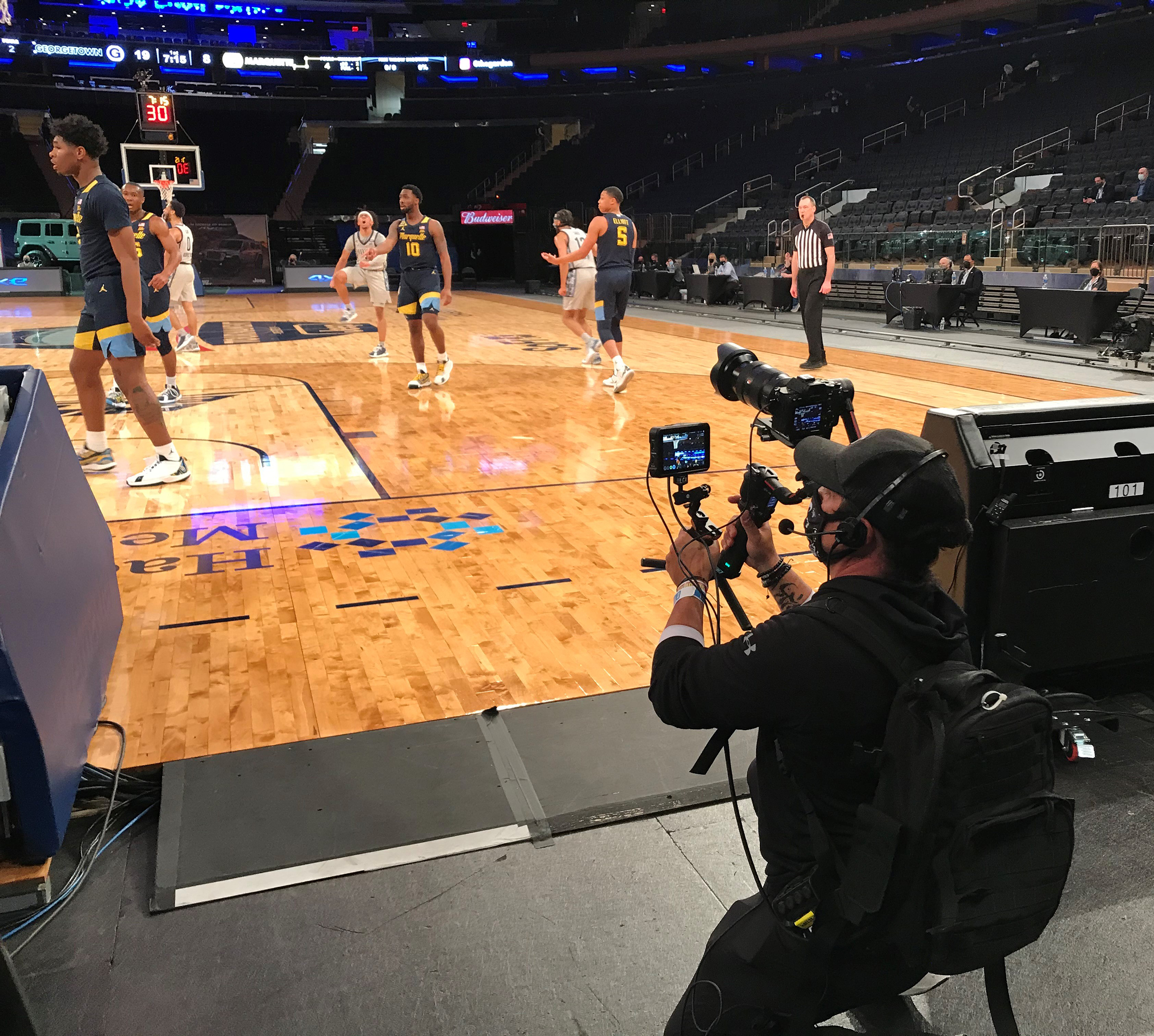The Big Picture: Inside the Shallow–Depth-of-Field Movement and Why It Is Here To Stay
Broadcasters are embracing mirrorless and cine-style cameras to capture dramatic shots of live sports coverage
Story Highlights
When it comes to live sports production, there are two types of innovations: the ones folks in the business notice and the ones that relatives and friends notice. And when it comes to the latter, it is safe to say that, with the exception of HDTV, nothing has captured the attention of the regular fan as much as the use of shallow–depth-of- field cameras in live applications. And even the industry’s most experienced professionals have taken notice.
Explains Steve Milton, director, golf, CBS Sports, “My first experience [with shallow depth of field] was watching NFL, and I saw a running back run into the zone, and I just saw a completely different look, something I’ve never seen before. There was something very different about the images and something the viewer had never seen before.”
For years, mirrorless cameras and shallow–depth-of-field systems have been a staple for things like features, bumpers, and other elements that can be postproduced. The big change in their use occurred this past NFL season when Fox Sports used one live on the field during a game in December. Fox Sports SVP, Technical and Field Operations, Mike Davies recalls that it was just a C game, proving that innovation can often filter up from the bottom. The rig, commonly known as “Megalodon,” combines a Sony A7R IV, Sony FE 24-70mm f/2.8 GM lens, DJI Ronin-S gimbal, a field monitor and a 1080p wireless transmitter.
https://twitter.com/NFL/status/1340738620626333696
“The crew had been trying the camera during pregame warmups,” Davies recalls. “The camera looked great, and we decided to put it into live use. Rarely in my career have I seen a production tool garner such immediate and widespread approval.”
The Megalodon has become a staple of Fox Sports’ live coverage in the months since, including throughout the NFL Playoffs, the Daytona 500 and its NASCAR slate (primarily for intros, hero shots, and even key interviews), the Big East Men’s Basketball Tournament, the Westminster Kennel Dog Show, and Fox Deportes’ Liga MX matches. According to Davies, the system will also be used at the MLB All-Star Game and for other high-profile MLB broadcasts this season.
The positive reception has helped the trend sweep not only the U.S. but overseas as leagues like La Liga have started using it. Stateside, it has become a staple at CBS Sports for NFL (including Super Bowl LV) and golf coverage (including The Masters and PGA Championship). Both ESPN and Turner Sports have featured the systems throughout the NBA Playoffs, and even MLB Network is using a shallow–depth-of-field system for coverage of the MLB Draft combine. Others who have deployed the systems include Marquee Sports Network, PLL , PFL , Bally’s Fight Night, and BaylorVision.
“One of the key abilities of these cameras is to shoot live but play back in slow motion,” adds Davies. “The workflow is a bit clunky, but it is one that can be used effectively in football, where a fair amount of downtime exists during plays, so you can shoot and capture some amazing shots.”
Nothing New But…
An example of how the shallow-depth-of-field look was used in the past is Fox Sports’ deployment of the technology in the dugout for MLB coverage. Tom Wells, director, photography/owner, Technician Films, used Arri Alexa and RED cameras coupled with Cooke Optics anamorphic lenses for the 2018 World Series to capture images that would be played out ahead of commercial breaks.
“In those moments,” Wells explained in 2019, “our goal is to take the viewer from the technicals of the game itself and into the human and emotional side of it. We are gathering those elements constantly, and we have only a few seconds here and there, so what can we do to separate those moments from the broadcast in a way that enhances the broadcast?”
The use of anamorphic lenses has been enabled by improvements in the conversion of anamorphic material to the 16:9 aspect ratio required for broadcast.
“Previously,” said Wells, “it was difficult to integrate large-format cameras into the broadcast quickly because of the large file sizes associated with them, and allocating the time needed to re-crop and adjust the images was just about impossible. But we collaborated on the workflow with the editors and can now shoot widescreen to further enhance the cinematic and theatrical feel.”
The Right Stuff
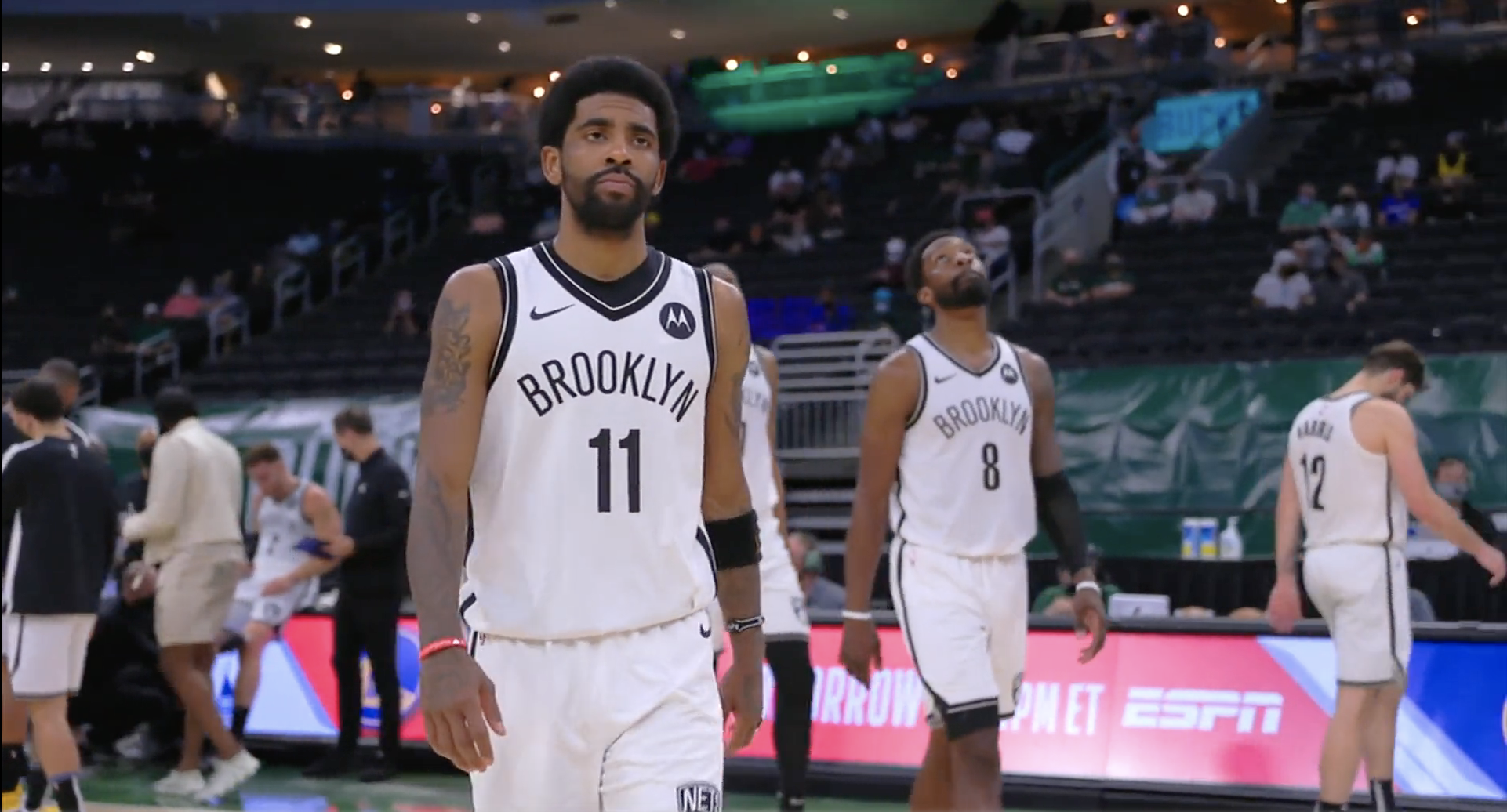
ESPN has deployed both the Sony Alpha1 and the Canon EOS C500 cameras to capture cinematic shots like this during the NBA Playoffs.
So what does it take to get into the shallow–depth-of-field game? A mirrorless camera and a prime lens (which has a single focal length and cannot be zoomed in or out) is a solid start. And, of course, a transmitter is important as well.
Fox Sports relies on the Sony A7iii for seamless live use (and slow-motion playback) while it uses the Sony Venice for pieces that will be postproduced. The Venice will also get thrown into the live mix if a more filmic look is desired or a clip needs to be turned around quickly. CBS also began by using the Venice camera but now uses the Sony Alpha 1.
ESPN, meanwhile, has relied on the Sony Alpha1 and the Canon EOS C500, both models deployed with MōVI stabilizing mounts. Those can be seen in action during ESPN’s current coverage of the NBA Playoffs and College World Series. In addition, the broadcaster is evaluating options for Monday Night Football, including various combinations of lenses and mounts. Prime lenses, which would have been unheard of in sports production only a year ago, are a key component as well.
“We’ve taken full advantage of the options offered by these full-size image sensor cameras using a varied assortment of prime lenses,” says Chris Calcinari, SVP, ESPN and ABC Sports Remote Production Operations. “It has had a tremendous impact for NBA coverage with high-quality images of NBA stars for live, quick-turnaround packages and postproduction usage. And NBA production has embraced the new look as an impactful way to highlight storytelling.”
Also finding success with the shallow depth of field and the NBA is Turner Sports. Like ESPN, it deploys the Canon EOS C500 with a fixed 50mm lens, although that lens is swapped out for a 24-70mm depending on what the director wants to do.
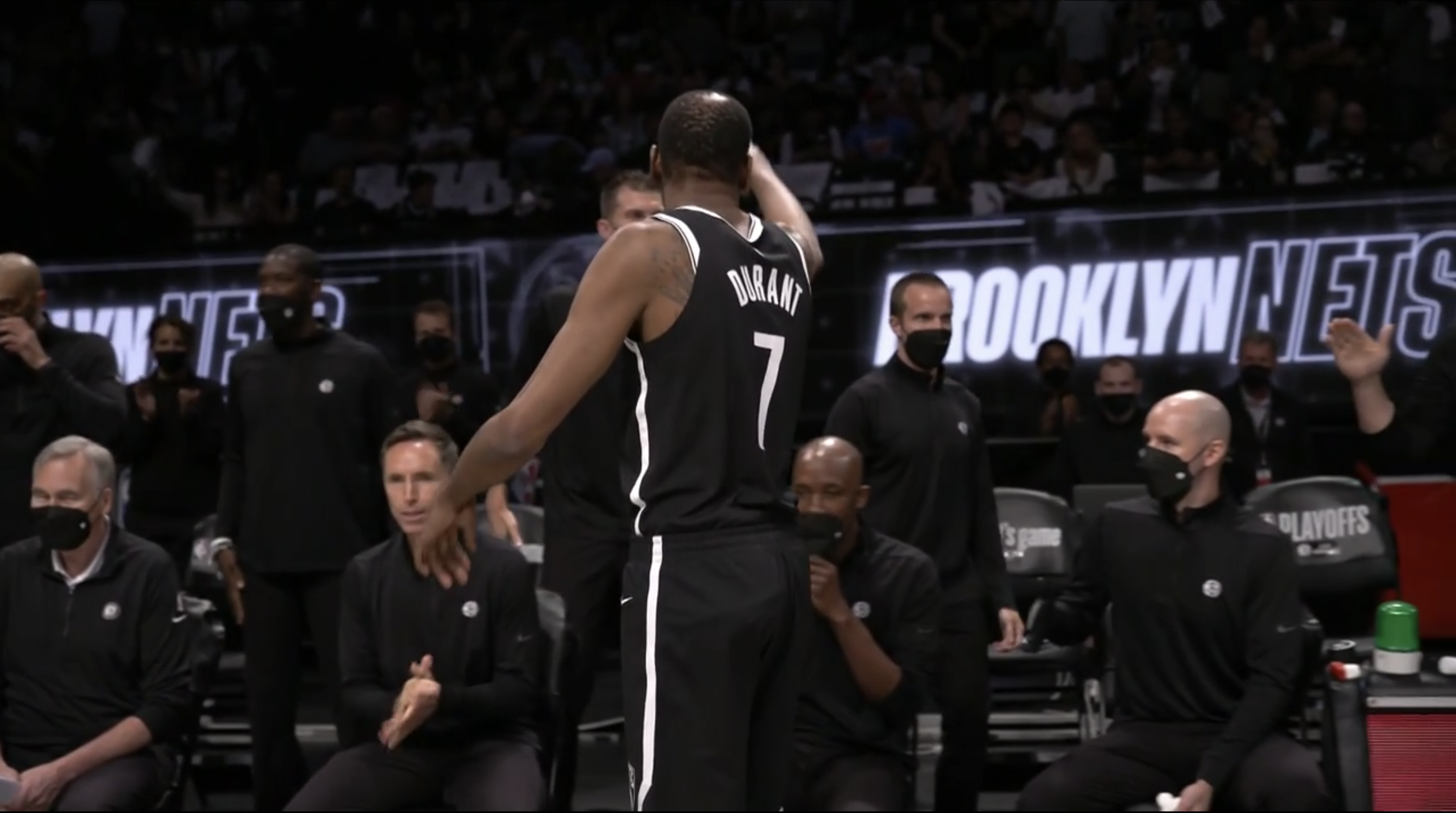
Turner Sports has deployed a Canon EOS C500 for shallow–depth-of-field shots like this one throughout the NBA Playoffs and at the NBA All-Star Game.
The first time Turner put it to use was at the NBA All-Star Game, where there were plenty of opportunities to use it in a controlled environment with players relatively still during introductions and trophy presentations.
“The reaction has been a very positive response from production, and kudos to the NBA as they have allowed us to explore having access to the court and proximity to the players,” says Chris Brown, VP, operations and technology, Turner Sports. “It has been about finding the right time to use it.”
Milton agrees with the need to find the right time to use it. During CBS coverage of The Masters, he and the team put it to great use on both Saturday and Sunday showing Hideki Matsuyama walking off the 18th green.
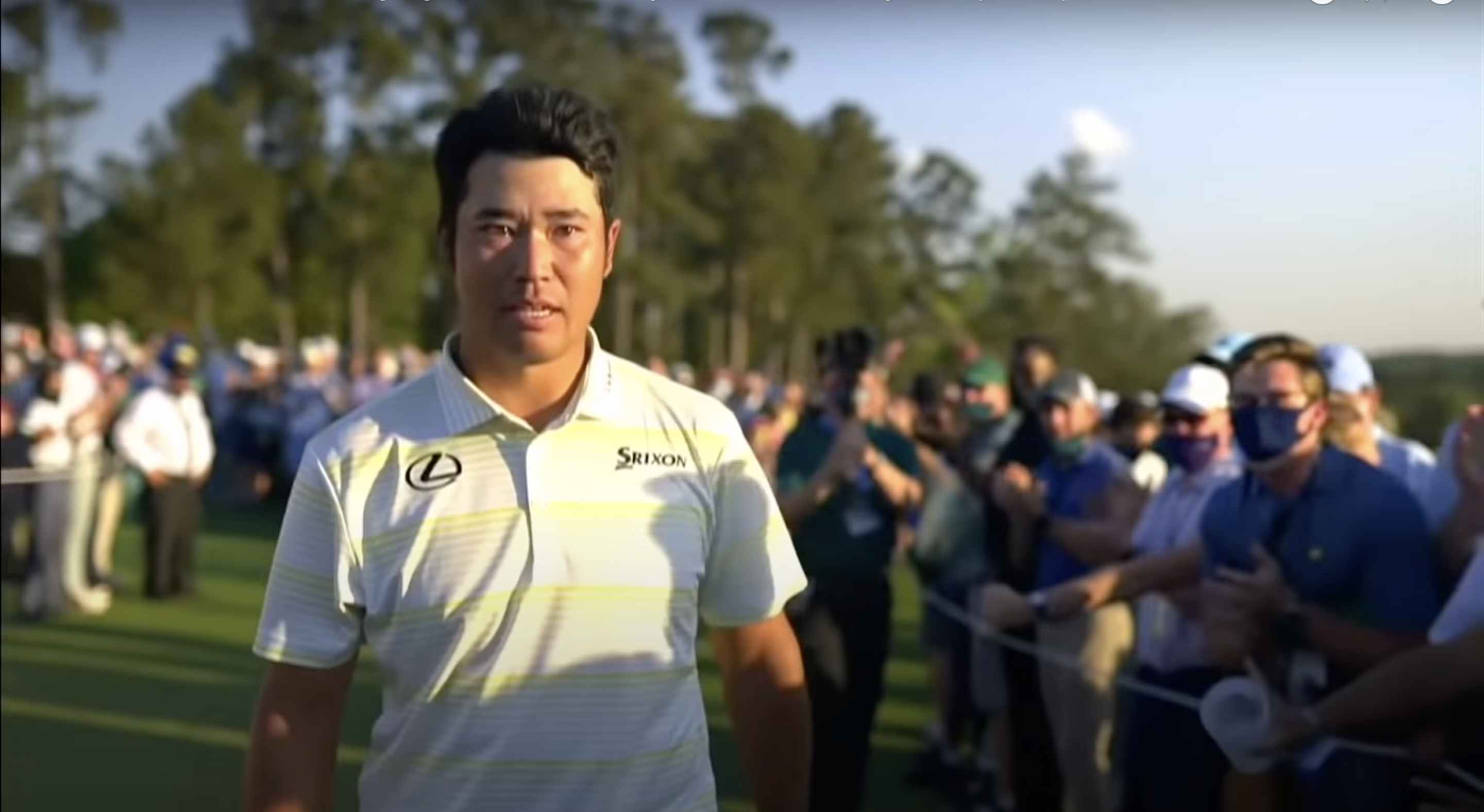
CBS Sports used the “Atlas” camera rig to capture Hideki Matsuyama’s Masters-winning walk off the 18th at Augusta.
“You’ve got to integrate it with the story,” he says. “It’s cinematic, it’s specialty, and it’s nothing you’d want to shoot the whole show with because of the narrow depth of field. But it really brings out the subject you’re shooting, so the eye focuses on what the operator intended to shoot.”
The camera rig, called Atlascam by CBS, also played a key part in coverage of the final groups on Saturday and Sunday at the PGA Championship. CBS Sports VP, Remote Technical Operations, Jason Cohen considers the shallow–depth-of-field camera a natural fit for golf coverage.
“Golf is a perfect sport for this type of technology,” he explained earlier this year. “It’s a controlled setting, and you can focus on one athlete at a time. There aren’t a bunch of people at the same time, making the operator try to figure out who to put in focus. It was easy to follow one golfer and create that separation from the backdrop, and I think it was a success.”

PFL’s Steadicam rig features two cameras — one broadcast, one cine-style — on a single Steadicam rig.
The Professional Fighters League (PFL) has taken an unusual approach to the shallow–depth-of-field game, deploying a Dual View Steadicam rig featuring one traditional broadcast camera used for fight coverage and one mirrorless SLR camera providing cinematic shallow–depth-of-field shots for fighter introductions.
“Now we have two cameras on one Steadicam, which is not only efficient but gives us some really great looks for fighter intros,” says Faratzis. “Instead of cutting between cameras for the introductions, we’re using that nice, soft cinematic look for the entire fighter intro on a Steadicam, which offers a cool and intimate look. Then, we can switch to [the broadcast camera] and still get those more traditional Steadicam shots in the [broadcast].”
Focus, Focus, Focus
Once you have the gear, it’s time to deploy it properly, and the ability to shoot in focus is critical.
“Keeping focus on a camera like this is like keeping a marble on a mirror,” says Davies. “An operator needs to get used to how autofocus will respond in various situations in order to make sure that the desired subject is indeed in focus.”
Milton says that offloading the focusing duties to a second operator is an important development that will only improve the odds of a great shot.
“I’m very pleased that we can control the camera on the remote side, as a lot of these cameras have to be adjusted on the fly, depending on light conditions,” he explains. “The operator doesn’t have to worry about camera settings as it’s all done back in the trucks. And, to me, that is a big leap forward.”
AVS (Aerial Video Systems) founder Randy Hermes says his company has seen an exponential rise in interest for cinematic systems like these and provided systems for the Super Bowl LV Half-Time Show, NBA All-Star Game, NBA Playoffs, and other events. He agrees that “the biggest challenge for sports is that single camera operators can have a hard time following focus the way you need to with those cameras.”
He adds that AVS is currently collaborating with Canon to develop a wireless–camera-control system, which will take this package to the next level.
What’s Next?
Brown and others agree that the use of shallow depth of field will continue, especially as COVID restrictions are lifted.
“As COVID restrictions ease up and we find more creative ways to use these cameras in close proximity,” Brown says, “we will continue to evolve its use.”
Calcinari adds that ESPN is likely to use multiple live mirrorless and shallow–depth-of-field cameras on several properties — and in several applications — in the future. “Possibilities are wide open and could include second-screen multi-camera productions using this new imaging technique.”
The trick during that evolution is to make sure it also doesn’t get overused.

Marquee Sports Network was the first to use a Megalodon system for live baseball but expects many more to follow.
“I hope it is something that we can keep as a special camera,” says Davies. “I think that the reason it garnered a lot of attention was that it highlighted an important event: a touchdown, an important interview, etc. I think that the replay function on these cameras is a big plus as well, and I see the workflows for these things getting more streamlined. That will be helpful in getting more of this super-slow-motion/dramatic content on the air.”
And then there are the ways to make the cameras stand out further.
Milton thinks a more saturated look could help the images pop even more: “I would like to see a lot more color and a more saturated color look with heavy hues that might really stand out.”
